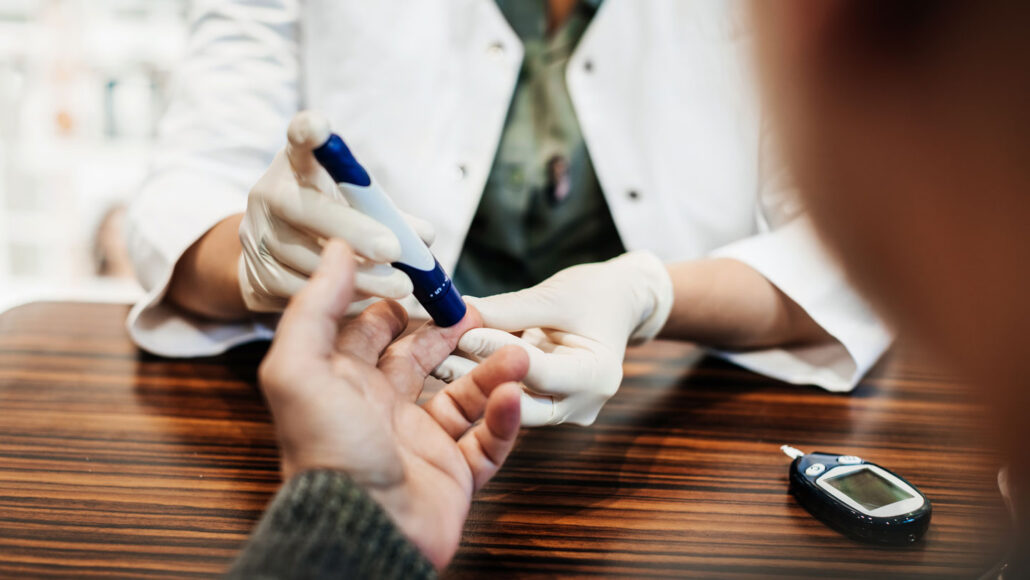New research presented at the Annual Meeting of the European Association for the Study of Diabetes (EASD), in Hamburg this week, suggests that exposure to low doses of radiation may contribute to an increased risk of diabetes.
The study by Dr Huan Hu and Dr Toshiteru Ohkubo from the Japanese National Institute of Occupational Safety and Health involved more than 6,000 out of around 20,000 emergency workers who responded to the radiation accident at the Fukushima Daiichi Nuclear Power Plant, which was hit by a huge tsunami in March 2011.
Substantial amounts of radioactive materials were released into the environment following explosions at the nuclear plant.
In 2014, the Epidemiological Study of Health Effects in Fukushima Emergency Workers (NEWS) was established to clarify the long-term health effects of radiation among emergency workers.
Few human studies have examined the impact of radiation exposure on diabetes development, particularly at low doses. To find out more, researchers examined the association between low-dose radiation exposure and risk of diabetes in 5,326 male emergency workers (average age 46 years) taking part in the NEWS study.
Between March and December 2011, individual emergency worker’s radiation exposure was measured using a pocket alarm dosemeter for external exposure and a whole-body counter for internal exposure.
Study participants underwent regular health examinations involving more than 70 components, including blood sugar, lipids, urine tests, inflammation biomarkers, thyroid function tests, and eye examinations.
Between 2012 and 2021, 392 participants developed diabetes—defined as a fast plasma glucose level of at least 126 mg/dL, an HbA1c level of at least 6.5 percent, or self-reported diagnosis of diabetes.
The researchers assessed the association between incident diabetes and cumulative radiation exposure after adjusting for a wide range of potential confounders including age, body mass index, smoking, alcohol consumption, leisure-time physical activity, employment at the nuclear power plant, dyslipidemia (abnormally high levels of fats in the blood), and high blood pressure.
The analysis found that compared with the lowest cumulative low-dose radiation exposure (0–4 millisieverts [mSv]), the risk of developing diabetes was 6% higher for workers exposed to 5–9 mSv, and 47 percent and 33 percent greater for those exposed to 10–19 mSv and 20–49 mSv, respectively.
However, no elevated risk was detected in those exposed to radiation doses of 50 mSv or higher, likely due to the small sample size in this group.
“Our findings suggest an increased risk of diabetes among nuclear emergency workers from low levels of radiation. While the potential mechanisms remain somewhat unclear, reports suggest that radiation can adversely affect pancreatic cells responsible for insulin production, potentially contributing to diabetes. Additionally, there is an association between radiation exposure and heightened inflammation, a well-known factor in insulin resistance and the development of diabetes,” explains lead author Dr Hu.
He adds, “Ongoing follow-up of NEWS participants will provide an even clearer picture of diabetes risk at low radiation doses. As more diabetes cases emerge within our study group, our expanded dataset will enable more robust analyses, allowing researchers to better assess the link between radiation exposure and diabetes risk.”.
In Europe, average background radiation exposure from natural sources including radon gas in homes and cosmic rays from outer space by country ranges from about 2.7 mSv over a year in the UK to more than 7 mSv annually for some groups of people in Finland. In comparison, a single chest X-ray exposes a patient to about 0.1 mSv of radiation, and a single mammogram to 0.4 mSv. Some other imaging tests have higher exposures, including a CT scan of the whole spine (10 mSv) and a PET scan (25 mSv).
The authors note that the findings show observational associations rather than cause and effect and point to several limitations, including the absence of data on diabetes types, potential residual confounding from unaccounted factors or measurement inaccuracies affecting the diabetes-risk and radiation-exposure link.
Furthermore, they emphasise the importance of considering selection bias due to the participation of only 30 percent of emergency workers in the NEWS study. The retrospective design also introduces factors such as information bias, which should be considered when interpreting the results.
Finally, the authors offer their “sincere thanks to the emergency workers who coped with the Fukushima Daiichi Nuclear Power Plant incident, both for their heroic efforts in minimizing risks and for their voluntary participation in the NEWS study, which contributes to our understanding of radiation’s health effects and public safety.
SOURCE: MEDICAL EXPRESS/PACNEWS














